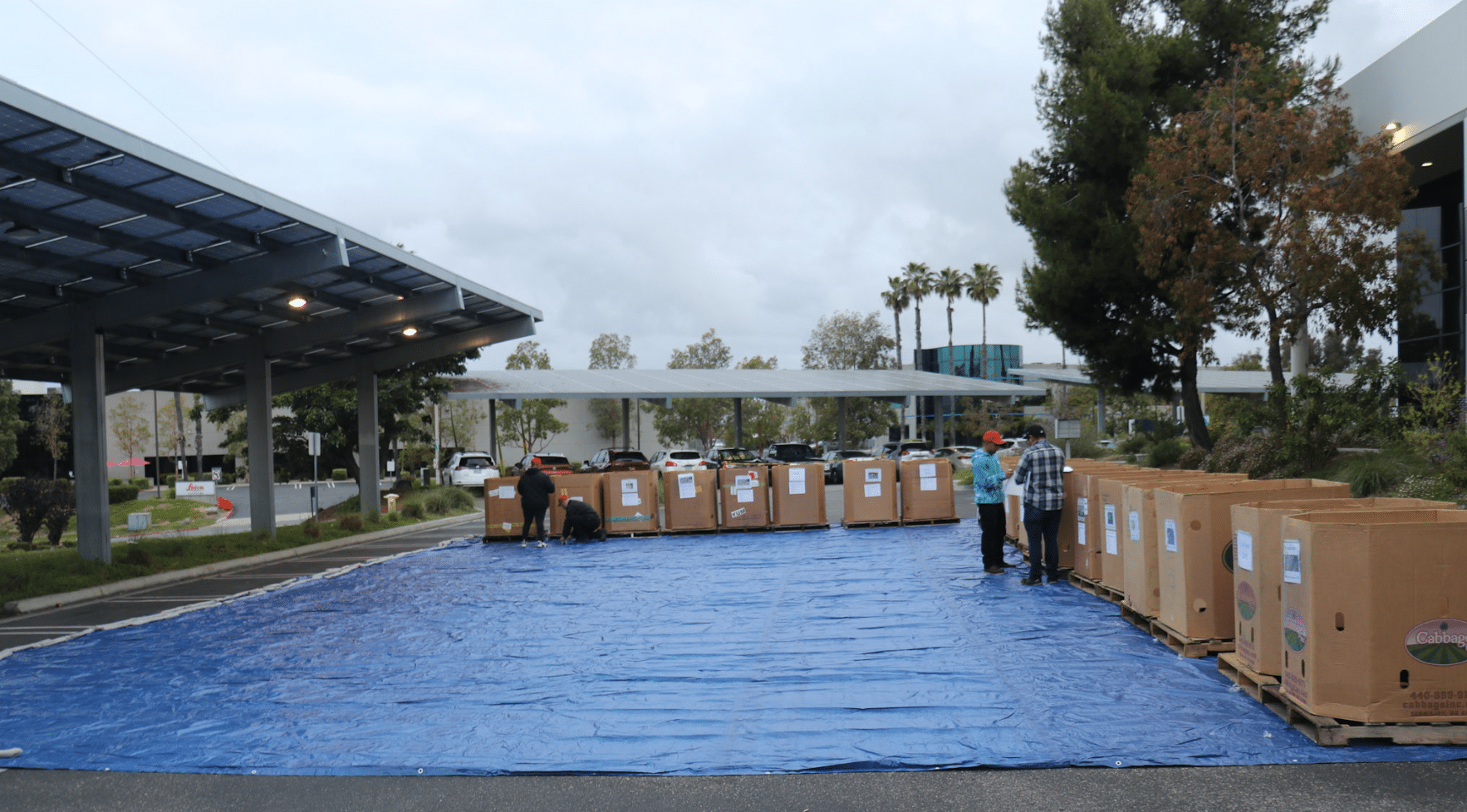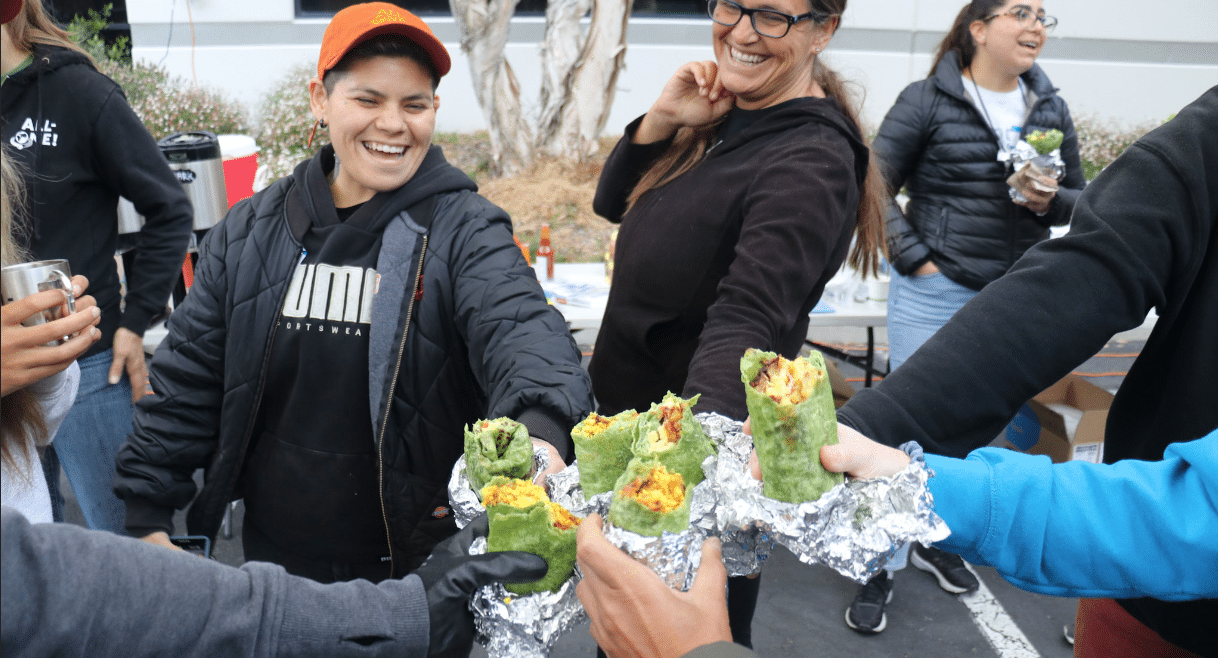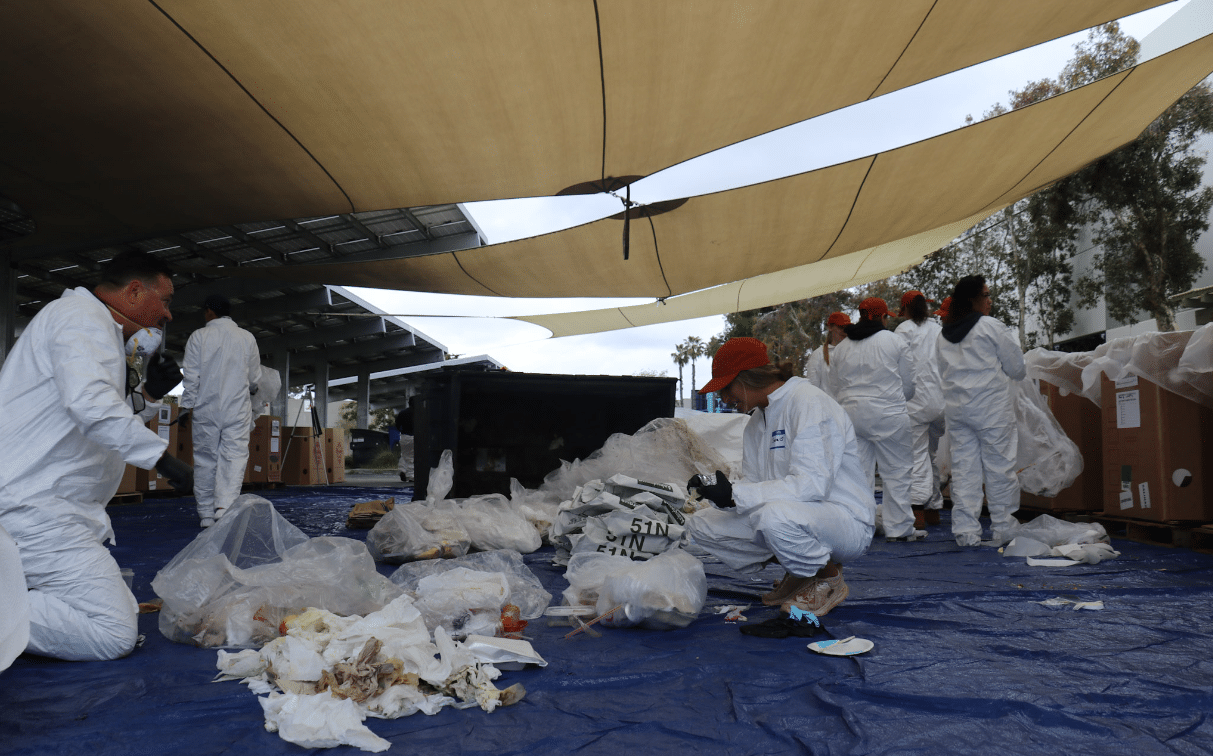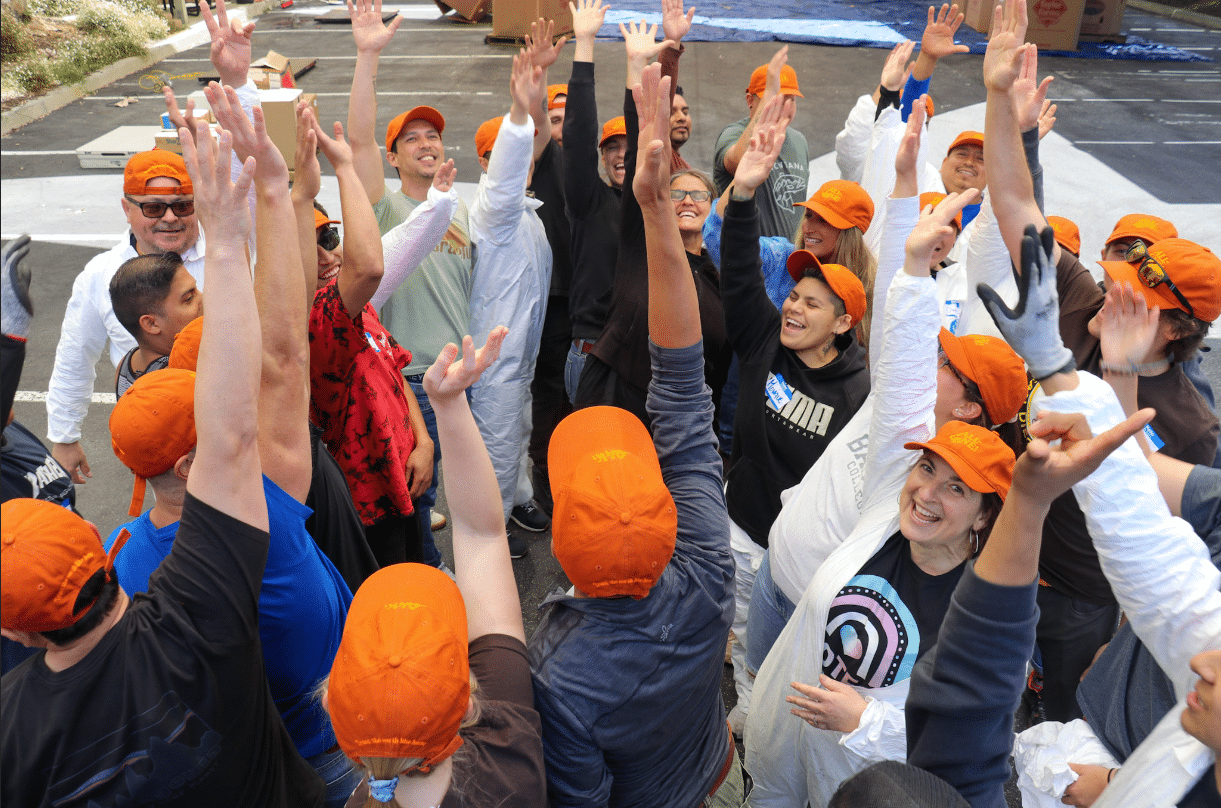It was 6 a.m. in the parking lot on an overcast Wednesday morning at the Dr. Bronner’s Headquarters in Vista, California. Nearly forty bleary-eyed staffers from across the company, myself included, were getting ready to volunteer for the 9th Annual Dumpster Dive – a chance to get personal with Dr. Bronner’s waste streams. While scarfing down hot breakfast burritos and coffee, we learned more about the WHY behind the Dumpster Dive.
The “Dive” – as we call it – was initiated in 2014 to gather data about the waste generated at the company. Dr. Bronner’s is committed to a “zero waste to landfill” philosophy, but the only way to move closer towards actual zero waste is to understand what is in our garbage. The data we collect is used as part of the Company’s annual B Corp reporting (Dr. Bronner’s is the top scoring B Corp in the world), and it is also analyzed year over year to better assess trends and opportunities for waste reduction at the company. “Zero waste” means that the company has diverted more than 90% of its waste from landfills, instead sending materials no longer needed to be recycled, composted, and repurposed. The biggest questions we hold during the Dive are: “What is going to the landfill that could have been diverted elsewhere?” and more importantly, “What can be rethought or redesigned to avoid entering the waste stream in the first place?”
Rethinking and Redesigning Our Waste
Darcy Shiber-Knowles, Dr. Bronner’s Director of Operational Sustainability & Innovation, reminded us that before we get to reusing, reducing, and recycling we need to be “rethinking and redesigning.” How do we rethink our products and our processes so that less industrial waste is created at the outset? Really understanding our garbage can help the Company better understand how to prioritize its resources and attention.

Around the empty parking lot were two very big sorting areas, each with 25 giant industrial strength cardboard boxes called gaylords set up around the perimeter. Each gaylord had a sign on it so we knew what should be sorted into that box. We would sort compost into three different gaylords: food scraps, compostable containers, and other compostable items such as paper straws, compostable cups, or compostable wax paper liners. Unused Dr. Bronner bottle labels were to be peeled from the sticker backing and labels would go into one gaylord, and the backing into another. We would sort out scrap metal, wood, clear plastic bags, colored plastic, plastic packaging ties, metal cans and plastic bottles. Finally, we had a gaylord for the purely landfill items – the things that could not be put anywhere else – like granola bar wrappers, condiment packets, chip bags, and the flexible straws used for pulling samples of raw materials.
Dumpsters were separated by building (we have three different buildings at Dr. Bronner’s HQ) and by waste type: landfill dumpsters, recycling dumpsters and compost dumpsters. We would be sorting the categories one at a time, and then we’d weigh all the gaylords at the end of each category to get an accurate weight. As a snapshot in time, we would be sorting a regular business weeks’ worth of waste from the three buildings – 18 dumpsters worth including landfill, recycling, and compost.
And just like that, it was time to put on our white hazmat suits, shoe covers and latex gloves and get to work.
Let the Dumpster Diving Begin!
The first dumpster was rolled out, tipped over, and the plump white garbage bags started tumbling out onto the concrete, one after the other. We would spend the next several hours opening each bag, carefully taking items out one by one and sorting everything into its corresponding gaylord. When I opened my first garbage bag, the inside of the bag was covered with coffee droplets and everything was wet from the coffee. I started separating every item: a to-go cup from Jack in the Box, partially crushed, with a wet napkin at the bottom and a banana peel inside. A small piece of Styrofoam with coffee dripping all over it. An egg carton with a few eggshells, part of a pencil, a crumbled up piece of paper, and some stale bread. All of this had to be sorted, one item at a time, into the corresponding gaylord.
I must admit going into the day, I had some romanticized notions of what dumpster diving would be like – I didn’t really consider that it would be kind of gross! But it was also fascinating and surprisingly fun! I also love that no one at the company is too important for dumpster diving – even President Mike Bronner, has been a Dumpster Diver. I think it says a lot about a company when the president is willing to spend an entire day with their team, sorting through the garbage.
My garbage threshold was reached when we got to the compost dumpster. The top 4/5 of the dumpster had relatively dry compostable containers with leftover food in them – easy enough to pick up and sort food scraps from wax paper from the container. But then as we got further down, the compost got more stinky and much soggier. Five Dumpster Divers, far braver than I, tilted over the dumpster and captured 15 gallons of “compost juice” into buckets to be weighed as part of the data collection.
Some of the weirder items we unearthed in the dumpsters this year included shoes (we found three shoes throughout the day), cat food, and a lizard (still alive, rescued and relocated to a happier place).
I learned that Dumpster Divers aren’t just trash sorters: we are amateur garbage detectives. We started noticing and discussing things like, “Why does one building put so many banana peels in the landfill instead of the compost? What can we do about that?” or “Why is there so much scrap metal in the garbage when there’s a bin for scrap metal at the back of the production floor?”
One Diver who works on the bar soap production line said that when he’s on the line and comes across a random item that he doesn’t know what to do with during his shift, it’s easy to just throw it in the landfill because there’s a garbage can available near his station. He offered to put a sorting box at his station where people can put these stray items accumulated throughout a shift. At the end of the shift, he would sort the items properly instead of putting them in the landfill. Other Dumpster Divers pledged to do something similar on their production lines. We have waste bin stations in different parts of the campus, but with enough good information about what waste is generated, it helps us know where we can set up more or different customized stations and do a better job making it easy and fast for everyone to divert as much as possible from landfill.
The Journey to Zero Waste
We got into a conversation about bottle labels and why the company is currently using stickers with disposable backing and hasn’t found a viable alternative yet. We learned our awesome packaging team is on the case and still looking.
Until participating in the Dumpster Dive, I really had no idea how much you can learn from your trash! And I learned that Dr. Bronner’s doesn’t just give lip service to the idea of “zero waste.” We hold ourselves accountable, year after year, to doing all we can to minimize our impact on the planet, and we have the stinky buckets of compost juice to prove it.
In a few weeks, we’ll know more about what the data has to say and how close we got to zero waste to landfill this year. Stay tuned – the results will be in Dr. Bronner’s All One Report!


